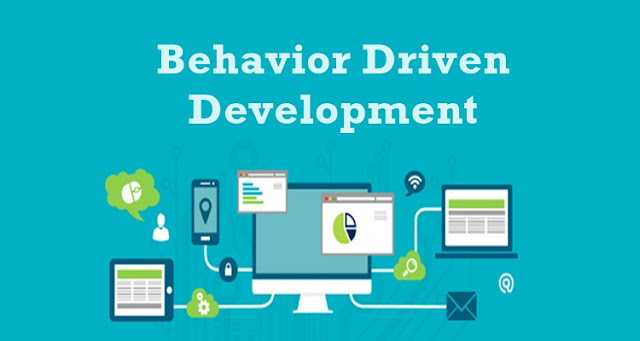Behavior-driven development is an excellent technique to prevent a common problem that arises in the software development process when teams work together.
The most prevalent issue when team work together is a lack of communication between parties, meaning that developers misinterpret what the business requires and business people underestimate what developers are capable of.
So, what is Behavior-Driven Development (BDD)?
Behavior driven development (developed in 2003 by Dan North) is an agile software development approach that emphasizes cooperation between project managers, developers, quality assurance, product managers/owners, and the business analysts in a software project.
It outlines a series of interactions with well-defined outcomes that leads to the release of useful, tested software.
It helps both the technical and business teams to achieve their objectives. In reality, it aids in the definition of desired business results, communication of what needs to be developed by the developer, and awareness of the technical issues they may face.
Basically, BDD focuses on talking with stakeholders to gain a clear knowledge of the software behavior you want to achieve. Instead of focusing on technical specifics, developers concentrate their attention on why a code should be written.
Benefits of Behavior Driven Development
Effective collaboration and inclusion
All parties involved in the project's implementation must work together effectively. BDD allows all project participants to participate and have a strong understanding of the product development cycle. By use of plain language, the project is well understood by all stakeholder’s concern. They can also help in communication, which leads to more productive discussions. Furthermore, because behavior scenarios are defined in simple languages, anybody may See more of code and develop them. The following are examples of scenarios:
● Product owners' requirements
● Developers' acceptance criterion
● For testers, test scenarios
● Automators' scripts
● Other stakeholders' description
The software design is dictated by the business value
In reality, BDD places a high weight on the business value and requirements. Developers are able to give a better outcome by defining priorities with the client based on the value it provides since they have a solid grasp of how the customer thinks. By concentrating on the value, no ineffective features are created.
Clear and unambiguous language
With behavior driven development, the possibilities are more narrowly defined, meaning it focuses on something specific. This will go a long way toward removing the uncertainty surrounding the new implementations. Clarity guarantees that the consumer receives exactly what they desire. The code also has a lot of clarity. There are no technical jargons used anymore, and there is no telephone game. This also helps to eliminate misunderstandings and assumptions. New participants can more easily join the design and work process and learn the features.
Ease of automation
Scenarios are simple to convert into automated tests. The scenarios already provide the steps. To accomplish each step's actions, the automation engineer must build methods/functions. Scenario diagrams make it simple to run the same scenario with different inputs. As a result, code duplication, which is the scourge of automation, will be reduced, and automation code will become more modular.
Increased adaptability
If the scenarios are stated simply, they will be relatively simple to update as the product evolves. The modular nature of the tests makes it safer to make modifications to the automation code. Scenarios may also be filtered by tag name to determine which scenarios run and which do not.
Improved user experience
You get satisfied users when you focus on the demands of the business, and that, of course, translates to a happy business. As the name implies, BDD focuses on the behavior, which has a greater influence than the implementation.
Developers and stakeholders are putting a lot of effort into improving the user interface and experience components of digital products by looking at the data and analytics behind how people use them — not just for design improvements, but also for customized experiences based on behaviors and personas.
Conclusion
BDD will impose a quality-first and test-first mentality, which is now lacking in many projects. All personnel participating in the development process are responsible for quality. This will See more stakeholders give different ideas which is extremely beneficial to the project. When it comes to writing code, developers and automation testers will think twice. They'll always begin by asking, "What's the most clear and simple way that might make this test work?" This prompts them to develop basic, well-structured code.

No comments:
Post a Comment